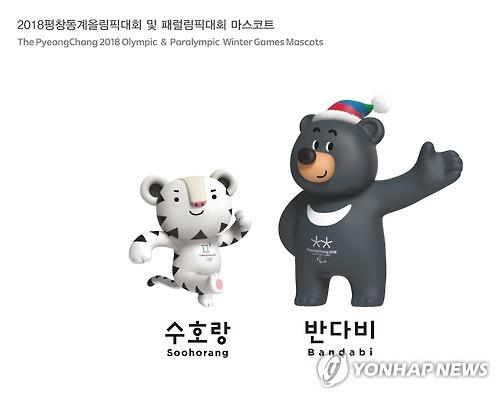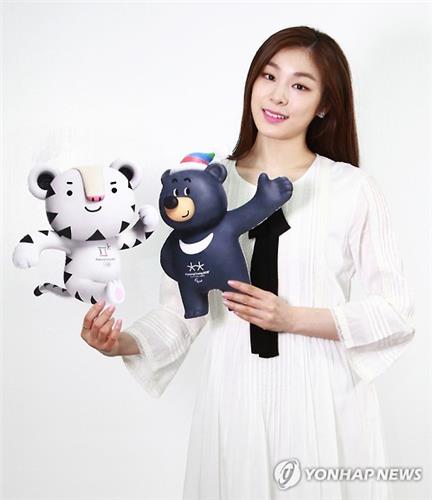- California Assembly OKs highest minimum wage in nation
- S. Korea unveils first graphic cigarette warnings
- US joins with South Korea, Japan in bid to deter North Korea
- LPGA golfer Chun In-gee finally back in action
- S. Korea won’t be top seed in final World Cup qualification round
- US men’s soccer misses 2nd straight Olympics
- US back on track in qualifying with 4-0 win over Guatemala
- High-intensity workout injuries spawn cottage industry
- CDC expands range of Zika mosquitoes into parts of Northeast
- Who knew? ‘The Walking Dead’ is helping families connect
PyeongChang announces white tiger as mascot

The photo provided by the PyeongChang Organizing Committee for the 2018 Olympic and Paralympic Winter Games (POCOG) on June 2, 2016, shows “Soohorang” (L), the white tiger mascot for the Winter Games, and “Bandabi,” the Asiatic black bear mascot for the Paralympic Winter Games.
SEOUL, (Yonhap) — A white tiger, a mythological guardian in South Korean folklore, will be the mascot for the country’s first Winter Olympics in 2018.
The PyeongChang Organizing Committee for the 2018 Olympic and Paralympic Winter Games (POCOG) announced Thurday “Soohorang” will represent the Winter Olympics. The Asiatic black bear, named “Bandabi,” will be the mascot for the Paralympic Winter Games, the POCOG added.
The mascots were finalized following the POCOG’s presentation to the International Olympic Committee (ICO) Executive Board Thursday in Lausanne, Switzerland, and a prior approval by the International Paralympic Committee (IPC).
The POCOG noted that tigers traditionally represent the shape of the Korean Peninsula, and the white tiger is regarded as “a sacred guardian animal.” The color white is also indicative of the snow and ice of winter sports, the POCOG added.
“‘Sooho’ is the Korean word for ‘protection,’ meaning that it protects the athletes, spectators and all participants of the Olympic Games,” the POCOG’s English-language statement said. “‘Rang’ comes from the middle letter of ‘ho-rang-i,’ which means ‘tiger,’ and also from the last letter of ‘Jeongseon Arirang,’ a traditional folk music of Gangwon Province, where the host city is located.”
For the Winter Paralympics, the bear symbolizes “strong will and courage,” and the Asiatic black bear is the symbol of Gangwon Province, the POCOG said.
“The mascots are designed to express a wide spectrum of emotions such as passion, joy, enthusiasm and love to actively engage the public,” the statement added. “This type of design reflects Korea’s unique contemporary cultural trend of using visual characters to express emotions.”
Lee Hee-beom, head of the POCOG, said the mascots have been created “to embody the collective will of everyone for the successful hosting of the Olympic and Paralympic Games.”
Gunilla Lindberg, chair of the IOC’s Coordination Commission on PyeongChang, also welcomed Soohorang as “a great choice.”
“(The white tiger) is a beautiful animal, strongly associated with Korean culture,” she said. “It also symbolizes the close link between the Olympic Winter Games and the natural environment.”

Kim Yu-na, former Olympic figure skating champion and honorary ambassador for the 2018 PyeongChang Winter Olympics, holds “Soohorang” (L), the white tiger mascot for the Winter Games, and “Bandabi,” the Asiatic black bear mascot for the Paralympic Winter Games, in the photo provided by the PyeongChang Organizing Committee for the 2018 Olympic and Paralympic Winter Games (POCOG) on June 2, 2016.












what is the
June 2, 2016 at 8:44 PM
American History Timeline – Andrew Roberts’ Web Site